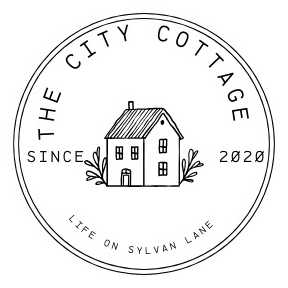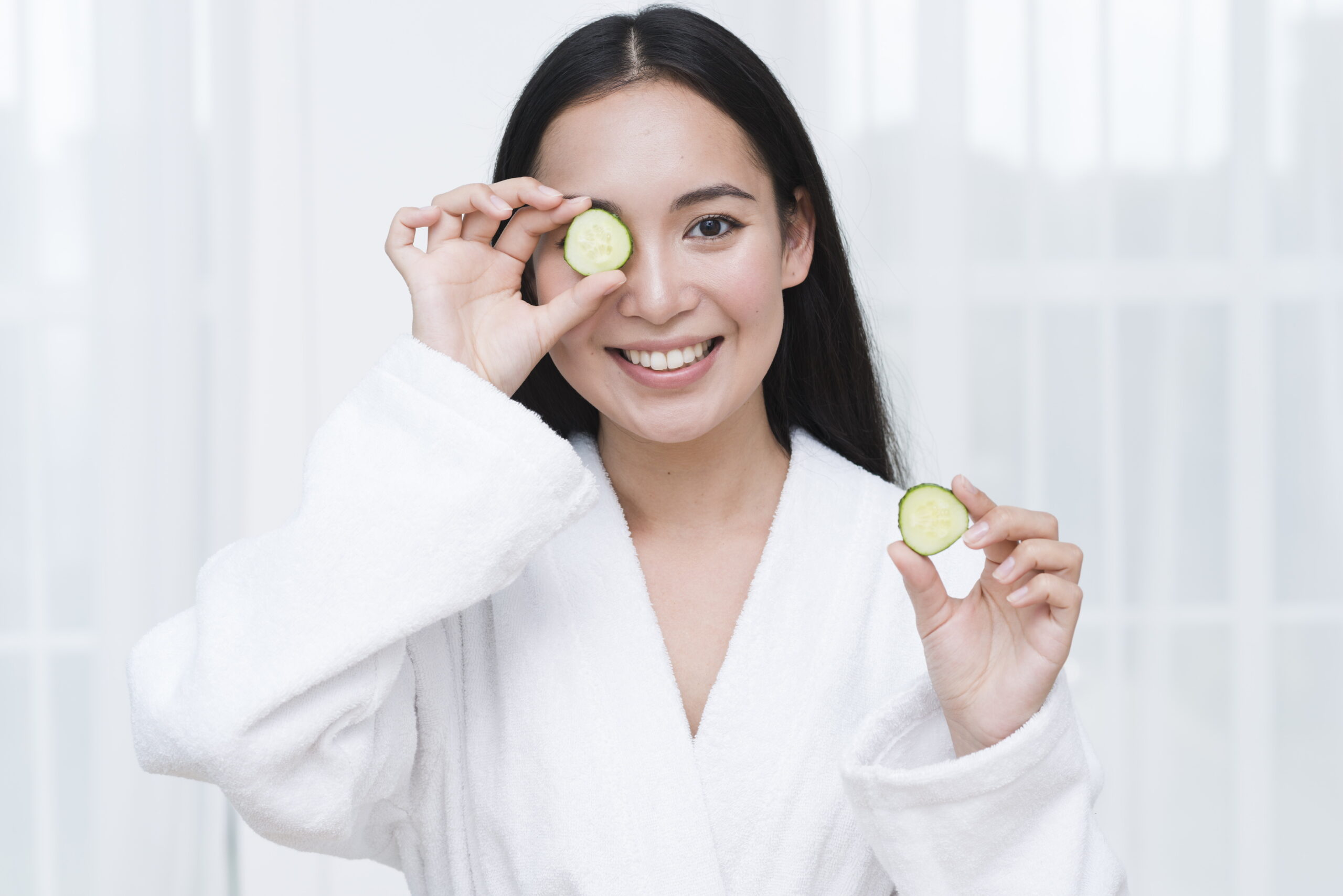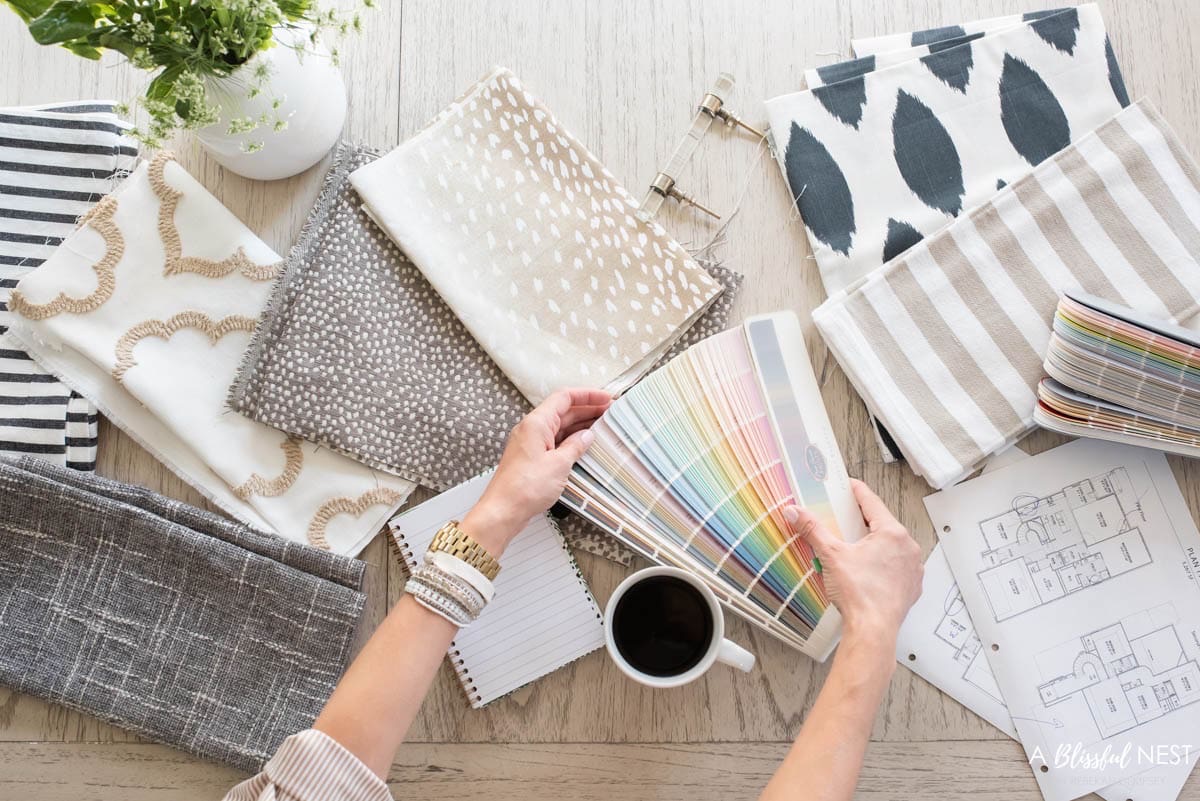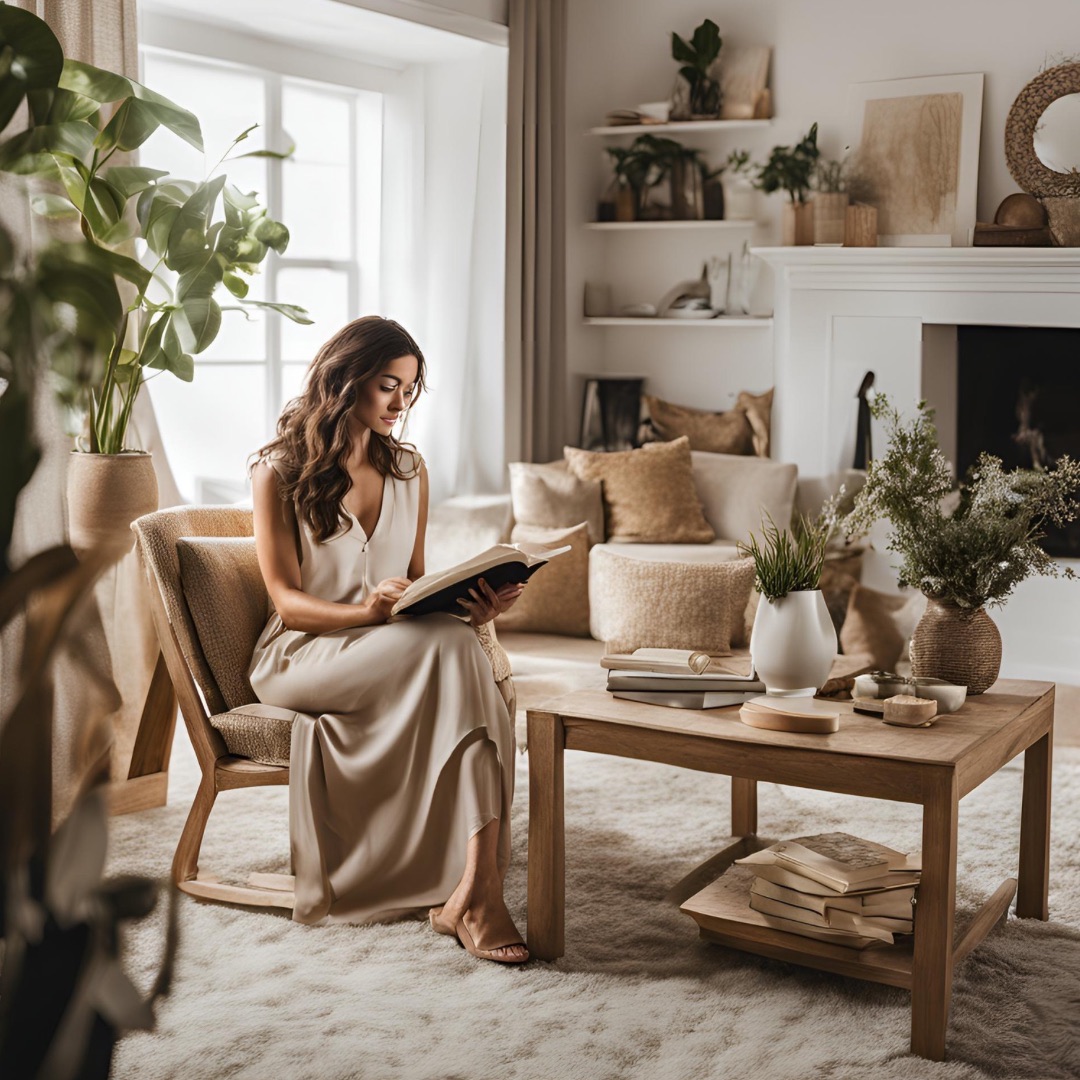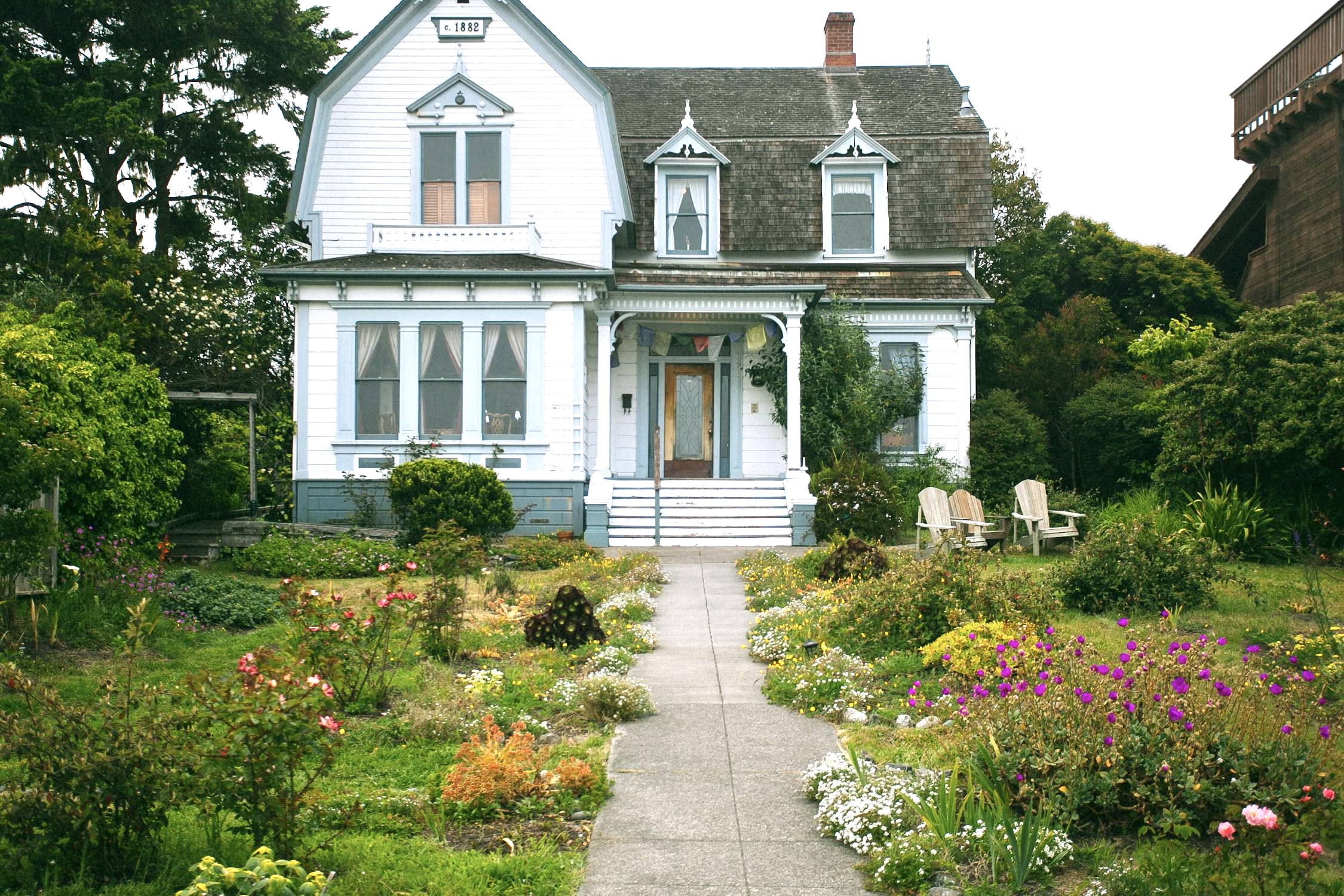Ultimate Guide: Creating Your Urban Cottage Garden Oasis
Feeling disconnected from nature in your urban home? Learn how to create your own dreamy cottage garden oasis, no matter the size of your space or the challenges of city living?
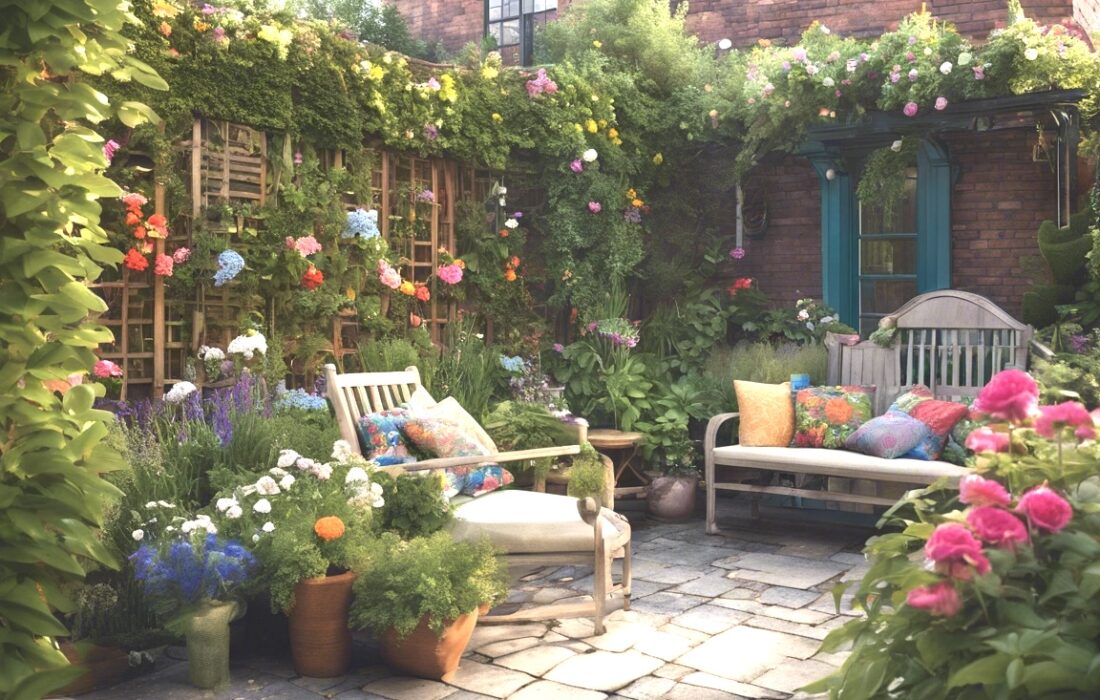
Dreaming of a serene garden escape, but stuck in the city? Discover how to transform even the smallest urban space into a tranquil cottage garden oasis!
Think about strolling outside into a garden, where traffic noise and other noises that accompany big cities are inactive, and only the sound of a branch swaying or a flower blossoming is heard. Such a compact urban, once overflowing with concrete, has transformed into a piece of heaven that resembles a countryside cottage. Thanks to the correct combination of textures, colors, and accents in the rustic style, even the representative rooms of the modern megacity can become a true garden. Including composite decking underfoot is so much more than a visual enhancement for your retreat; it also adds functionality to this sanctuary. Now is the chance to appreciate the opportunity of the outdoor area and transform it into a nice domain away from the noise of buildings.
1. Understanding the Cottage Garden Aesthetic
The beauty in their simplicity and strong connection with nature defines cottage-style gardens. This garden style involves the planting of many plants, wildflowers, and free-form garden structures. There is an idea of the combination of perennials, annuals, herbs, and vegetables that enrich the natural layered environment. Gardeners mainly cultivate foxgloves, daisies, and lavender to give the natural environment brighter colors and a somewhat old-fashioned look.
Unlike any typical gardening style that you create in an urban setting, where people expect a straight-lined and perfectly symmetrical pattern, the cottage garden style revolves around a more natural and closely formed pattern. This fosters the growth of a combination of texture and color, as opposed to appearing orchestrated or planned. It makes the environment look realistic and dynamic as it mimics or tries to emulate nature’s behavior in various ways.
Integrating this style into such a setting gives the sealing, structured shade an organic, individualistic feeling. Very often, densification achieves the necessary effect, providing the depth of the appearance of the internal commonwealth and the emergence of a peaceful oasis in the midst of chaos. Modern cottage garden design directs a range of perennials to create a diverse, unending, phenomenal experience that you can admire leisurely throughout the year.
2. Planning Your Cottage Garden:
Key Considerations for Urban Spaces
To design a cottage garden in a limited space situation, such as an urban backyard, you need to plan your space very effectively. It is advisable first to evaluate the dimensions of the space, the structures that may or may not exist in the area, and the light that enters the place. This will enable you to select the appropriate plants and design skills that suit your geographical location. This approach helps maintain the cottage look.
First, it is imperative to learn how to grow plants from the roof down and utilize the vertical space. Borders, trellises, walls, or hanging baskets provide extra planting without taking up floor space. Climbing plants like roses or clematis add vertical interest, softening walls with bursts of color. Plant layering also helps create the illusion of more space for the garden and the plants; for example, planting shorter plants in front of a tall plant will make the garden seem larger and fuller all at once.
Common challenges in urban gardens include inadequate light and poor-quality soil. You should use plants such as ferns or hostas in darker positions while fertilizing the soil with compost or other organic materials. Methods like putting your plants in raised beds or containers will enhance plant health and make your garden productive in the city.
Additional application of paths and seats makes it functional and adds beauty to it. Foliage ground cover combined with wrapped gravel or stepping stones gives the area a mysterious touch, whereas seating areas hidden among the plants are perfect for resting. All these features help turn your abode into an oasis from the urban hustle.
3. Choosing the Right Plants:
Embracing Color, Texture, and Fragrance
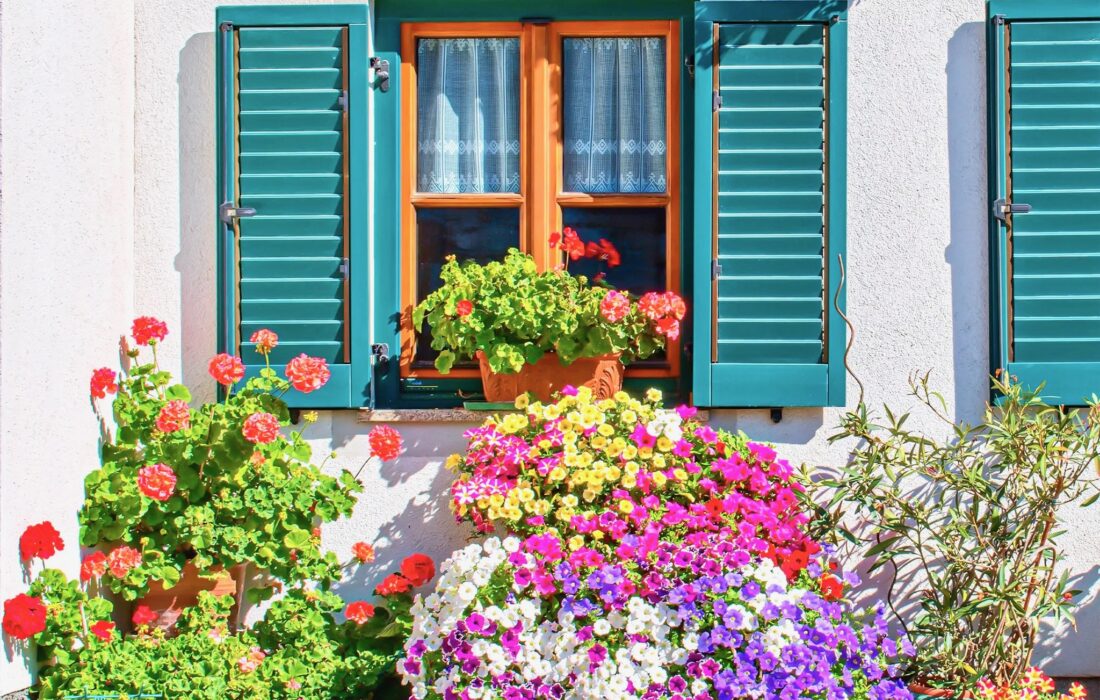
Choosing the right plants is critical to success in the cottage garden, particularly in urban environments where versatility and accommodation are crucial. Lavender roses, hollyhocks, and foxgloves, typical of cottage gardens, are not only beautiful but also effective in urban settings. Lavender is an aromatic addition that provides fragrant, lavender-colored flowers, while roses offer timeless beauty. Hollyhocks and foxgloves add height with their tall flowers, helping to create a romantic and magical atmosphere in the garden.
Well-lighted gardens with restricted access to sunlight can include ferns, hostas, or astilbes, which will make the dark areas of the garden more vibrant when planted. However, if you are using small containers, prostrate herbs such as thyme, dwarf lavender, or even succulents provide wonderful greenery without taking up much space.
The organic charm of cottage gardens lies in the integration of flowers, herbs, and fruits with ornamental plants. This blend results in both an aesthetic as well as an efficient working environment. In this respect, herbs like rosemary and thyme not only add greenery but also provide a pleasant aroma. Similarly, vegetables like tomatoes and lettuce can grow alongside flowers, contributing to the fresh and vibrant feel of the garden.
Thus, having chosen your plant varieties, try to incorporate them into the plant palette with consideration for colors, textures, and the plant’s year-round interest. The system of overlapping guarantees that the garden is always productive, featuring bulbous photosynthesis from spring plants, flowers in summer, and colorful leaves from autumn plants.
The plants that are most suitable for urban gardeners who want an easy-to-care-for garden are echinacea, sedum, and ornamental grasses. These varieties need little attention but are capable of adding a new dimension of texture and color; hence, they are appropriate for those with little time on their hands.
4. Incorporating Structures:
Arbors, Fences, and Pathways
Arbors placed in your cottage garden, as well as spaces covered by trellises or picket fences, boost the beauty of the layout and add functionality. Gates or arches with climbing plants such as roses or clematis above entries or over walkways introduce more height elements and a softer feel. Trellises support vines, add a green appearance that divides the urban surroundings, and emphasize the presence of nature.
These vertical aspects give depth to the small garden, making the large space even more enjoyable. Wrought iron fences, picket fences, and other wooden gates, when well designed, offer a good barrier without necessarily making the compound appear too enclosed. Such structures complement the informal and romantic character of cottage gardens, especially when made of classic materials, such as wood, that merge with the garden.
Wood and stone constitute natural materials that builders should use when constructing or renovating cottages to meet the intended prototype. Vine-covered arbors, grayed fences, and stone walks blend harmoniously into the plantings, making the garden feel natural and well-integrated. All these natural features give a sense of timelessness to the space.
More tangible features include walkways, which builders usually construct from stone, gravel, or cobblestone to support a strolling pattern. These paths are not just descriptive signposts; they lead the visitor while also intriguing them to explore further and discover corners of the landscape or a shaded bench.
5. Encouraging Biodiversity:
Attracting Birds, Bees, and Butterflies
Wildlife enrichment in your garden enhances its aesthetic value and improves the health of the surrounding environment. Birds, bees, and butterflies create a lively, thriving ecosystem in your urban garden when you plant flowers that attract them. These creatures are very important for pollination and seed dispersal, thus preserving the balance in your garden and adding motion along with life.
To attract pollinators, use plants that yield nectar and pollen, such as lavender, echinacea, and salvia. Native plants can be especially useful because they provide food and shelter for species particular to the area. Birds find their nests near shrubs and trees such as holly or hawthorn because of the food and shelter provided by these plants. This way, the garden will be useful in providing food at different times of the year, given that the plants you plant have different blooming seasons.
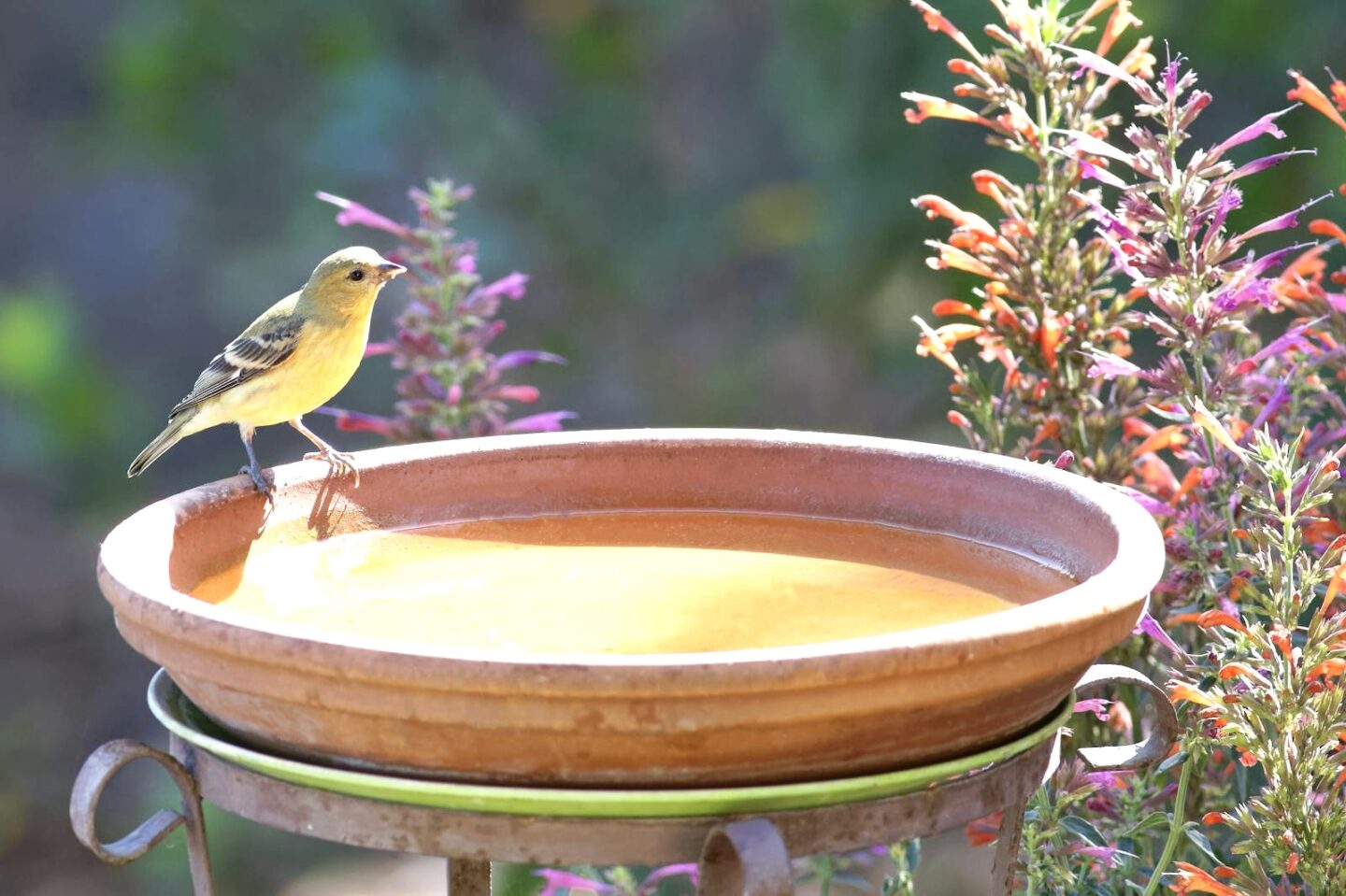
To further enhance the wildlife attraction, consider placing bird baths, feeders, and bee houses. Bird baths offer water when there is a scarcity, feeders attract various birds and butterflies, and bee houses are homes to solitary bees, which are important pollinators of your plants. These small features provide a welcoming habitat for animals and enhance the beauty and style of your cottage garden.
Enhancing the biological diversity of the urban garden not only boosts the garden’s health but also turns the garden into a living system. Allowing animals into your garden makes it livelier and helps it become one with other aspects of nature.
6. Designing for All Seasons:
Maintaining Year-Round Interest
It is advisable to make a cottage garden attractive all year round by including features that provide year-round interest. The secret is always to choose plants that bring different textures, shapes, and colors to the garden, irrespective of the time of the year. A proper combination of perennial plants with annual ones, as well as plants that have different beauty at different seasons of the year, makes the garden attractive even in periods of dormancy.
The right plants to plant at different times of the year are also vitally important. Some of the ever-green plants include boxwood and juniper, while early bloomers include daffodils and crocuses, to mention but a few. Flowers like daisies and lavender give the garden a summery feel, while perennials like asters and sedums add color and interest to the garden until the fall.
Incorporating containers, window boxes, or hanging baskets adds flexibility to your garden. These choices enable the modification of the plants placed based on the time of year. Some of the spring flowers may act as summer annuals, and some of the autumn leaves give warmth in the color when the weather turns cold.
Designers can include garden sculptures, birdbaths, or water features to make the space beautiful all year round. Even in colder seasons when plants may be dormant, these elements provide focus to the garden. For instance, the sound of water features makes the garden sound alive and welcoming any season.
7. Lighting Your Garden:
Creating Ambiance After Dark
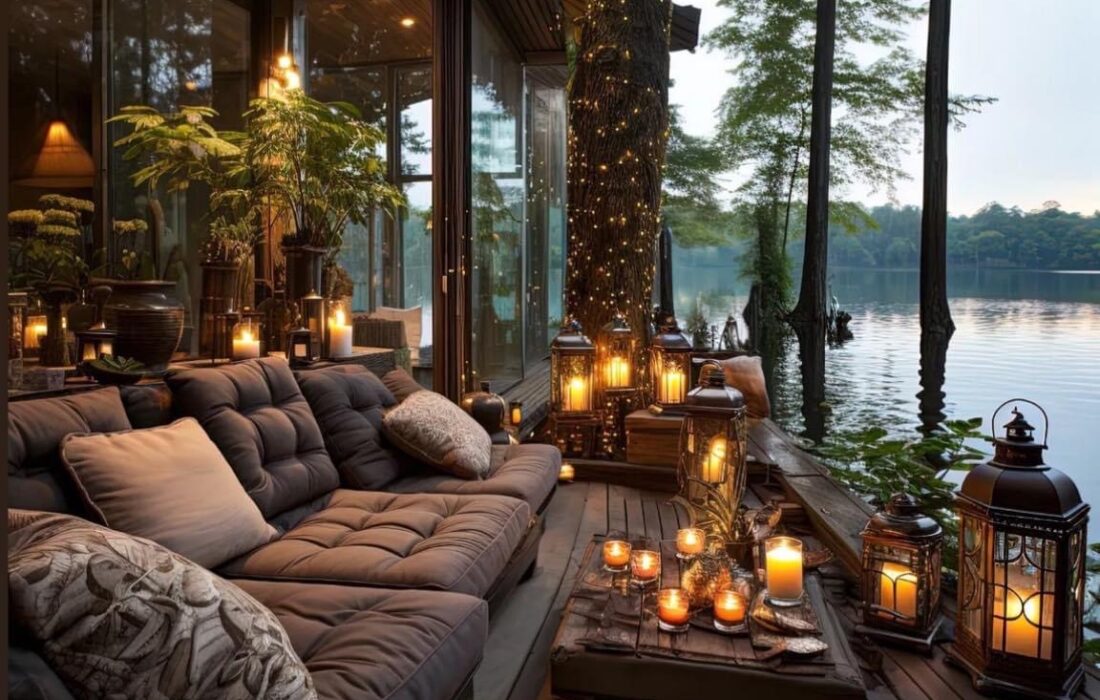
It is important to ensure that you include the right lighting to make your garden an attractive place to be, especially at night. Some of these lights draw the attention of the observer towards certain aspects of the garden, such as flower beds, trees, or water features, giving the garden a three-dimensional look. Soft, warm lighting helps the space maintain a natural, beautiful appearance at night and, at the same time, brings out the features of the space.
String lights, lanterns, and solar-powered lights can create a fairy tale, cottage-like atmosphere. The use of twinkle lights is one way of creating a fairy-like atmosphere; for instance, stringing them on fences or trees, placing lanterns on tables, or suspending them from branches makes the atmosphere more welcoming. These are more environmentally friendly and useful; they light up automatically when it is dark, without being too bright.
Lighting of paths and seating areas has both practical and decorative functions. You can install a few gentle lights at the pathways in the garden to help the guests while ensuring that the atmosphere of the garden remains casual. Lighting placed near seating areas creates a soft glow that is suitable for comfort during evenings and makes the environment very soothing.
8. Sustainability and Eco-Friendly Gardening Tips
Practicing sustainable gardening in urban areas is essential to minimize environmental impact and promote plant growth. A small urban garden can focus on using sustainable techniques to manage water and provide habitats for wildlife. Concerning sustainability, you can use this approach to promote the health of your garden without counting much on the help of other people.
Water is a precious resource, and thus, its management is crucial in sustainable gardening. Storing rainwater in barrels reduces reliance on city water supplies and meets the plants’ needs during droughts. The simplest of adaptations, like barrel downspout attachments, enable rainwater harvesting in urban environments. It is also advisable to use drip irrigation systems or self-watering pots to conserve water and still ensure that the plants are well watered.
Another great way to improve sustainability is composting in urban gardens. Small composting solutions like vermiculture or Bokashi bins suit small spaces, enabling you to turn your food waste into valuable fertilizer for your plants. Applying organic manure to your plants is beneficial, as it provides essential nutrients while also avoiding pollution of the environment.
An Eco-friendly garden also does not use chemical pesticides to control pests but uses natural measures. Integrated pest management methods like companion planting, introduction of beneficial insects, and neem oil spray defend plants against pests without disturbing the natural ecosystems in the garden.
9. Final Touches
When you add your customized style to your cottage garden, you truly unleash your imagination in styling the space. Adding ornamental items such as old accessories for the garden or creating hand-painted adages or unique planters adds personality to the garden. Recycled structures from junk, such as antique lanterns, watering cans, or wooden crates, serve as end tables, furnish your garden, and act as memorabilia. This improves the natural aesthetics and makes the scene more realistic.
For the next level of enhancement, you may add sculpture, wind chimes, or even a sculptured birdhouse. These additions, besides adding the element of fun to the garden, also make objects of interest in the garden. A sculpture placed in the right place or the sound of ornaments dangling in the wind is soothing, while the air of the cottage garden remains whimsical and full of fairy tales.
Cottage gardening is deliberately messy, and its design contains many quirks that are on purpose. For example, mixing containers, free-growing plants, and organic shapes with strict and highly structured compositions would not work well. It makes it easier for your garden to grow and develop over time, meaning that it will have a style that is unique to itself.
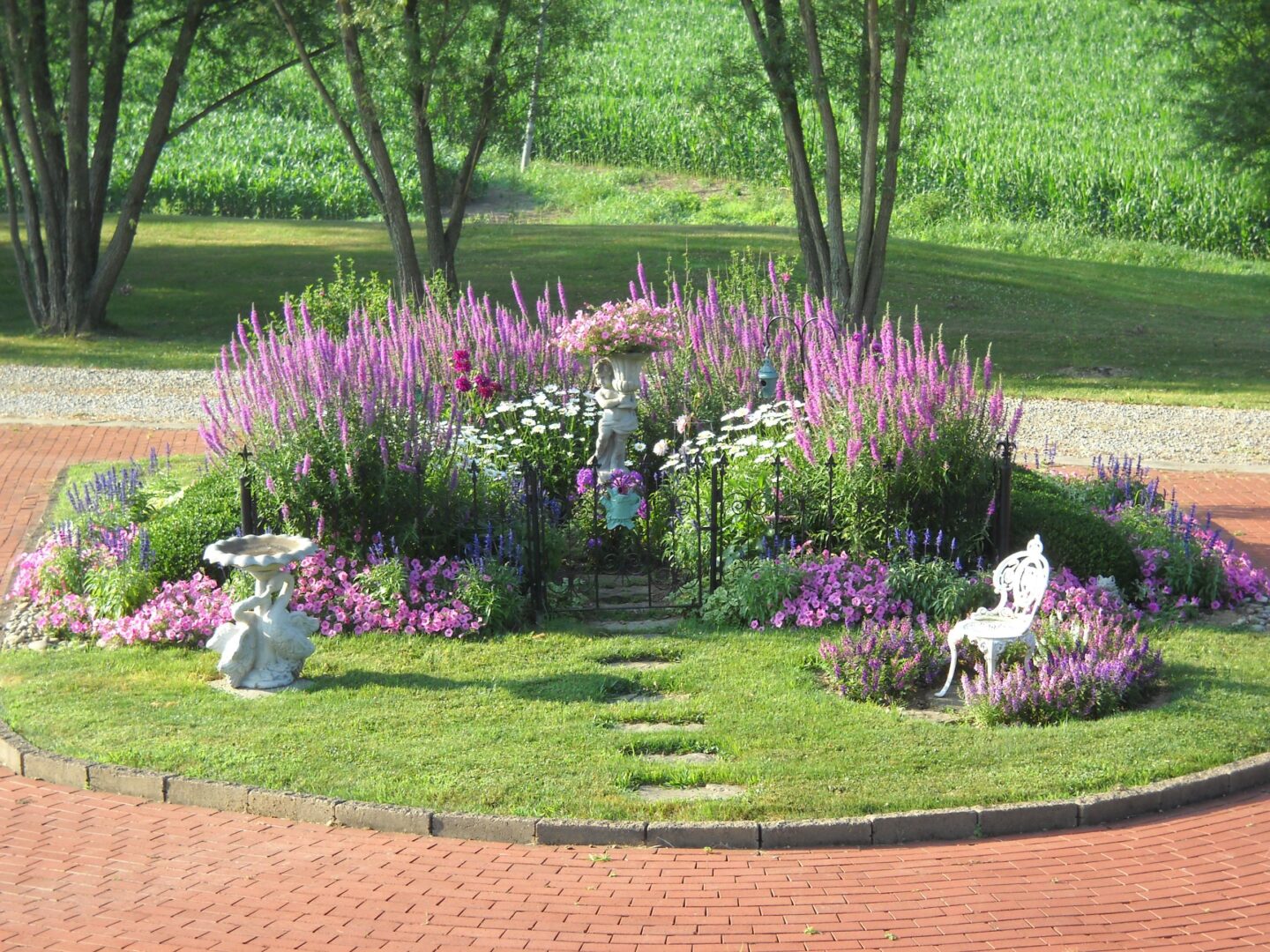
To make your garden uniquely yours, combine those objects that reflect you most. Even when you are reusing rustic items such as old cutlery to make plant pots or incorporating trendy and environmentally friendly items, every decision contributes to Organic Gardening. Combining these aspects encourages a purposeful ambiance that breathes vibrancy and character into your cottage garden, making the space personal and comfortable.
Conclusion
As you can see, creating your own urban cottage garden oasis is not only possible but incredibly rewarding. With a little planning and the right plants, you can transform even the smallest of spaces into a year-round retreat that brings joy and tranquility. Whether you’re embracing color, encouraging biodiversity, or adding charming structures, the possibilities are endless. Remember, every garden is unique—just like you! Take your time, enjoy the process, and let your creativity flow. With these tips in hand, you’re well on your way to building the cottage garden of your dreams. Happy gardening!
Before You Go
As always, I appreciate your visit, comments, and shares here on the blog! I’d love it if you also follow along with me on Pinterest, Instagram, and Facebookso you won’t miss any of my inspiration and ideas.
QUESTION:
Are you already a subscriber of The City Cottage? If not, sign up below to be the first to receive exclusive DIYs, home styling tips, organizing guides, and free printables straight to your inbox. Enjoy seasonal inspiration, budget-friendly projects, and early access to special deals and promotions. Let’s create a home you truly love together!
